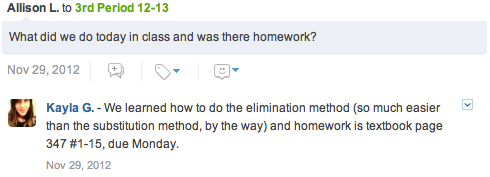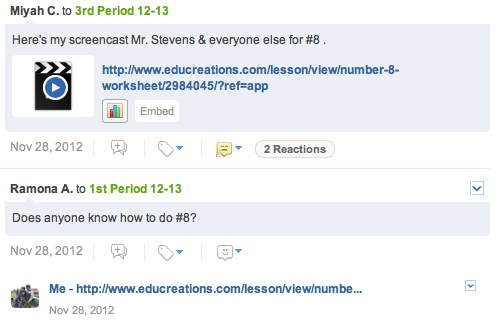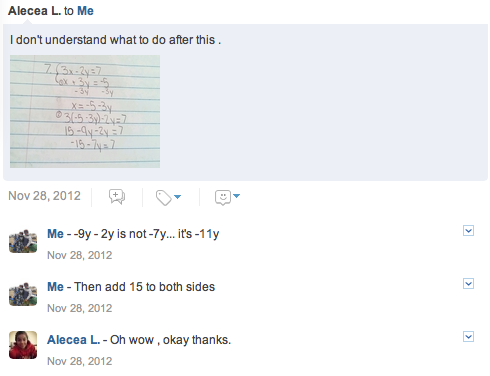First I would like to share that I teach ninth grade Algebra which translates to students that have struggled with math at some point in their academic career. Regardless of their level of motivation I enjoy my students’ quirkiness, their, at first glance, shyness, and watching them blossom into young adults. I have also been met with the realization that their definition of hard work and perseverance is different than mine.
I was introduced to the topic of classroom flipping in September and once I received an iPad I ran with it full force. I removed all paper homework assignments and signed everyone up edmodo.com and started posting videos on my website and edmodo.com. It turns out that regardless of how I assign homework, via textbook, worksheet, or video, it was going to be a battle for my students to complete the assignments. The average turn in rate for homework assignments would yield about 40% completion. Of my 190 students that seemed pretty normal compared to my colleagues. Once I started assigning video homework that number dropped, I would get comments like “Why can’t we just get regular homework?” or the ever so popular “I do not have internet.” And so I scaled my assignments to make sure the assignments did not drop the average of the class too much and I chalked it up as a learning experience.
And then second semester rolled around and I attacked with better know how and even more reassurance that I was doing right by my students. I adjusted my videos to one video per week that covered two topics, and one questionnaire per week. I even gave students an alternative, albeit lengthier, paper assignment. The results were BETTER and then not so great. It has been exactly 4 weeks into the new semester and here are some numbers of homework completed on time:
1st week – 96 students
2nd week- 117 students
3rd week- 60 students
4th week- 87 students
So what have I learned? Well taking into account that weeks 3 and 4 were shorter weeks I understand there should have been a little drop in completion but only 60 students? Another thing I noticed is that in weeks 1 and 2 I used computers in my classroom to work on another assignment and when students finished they then went onto our website and completed the assignment. But the most encouraging thing is that students are not fighting me on the homework anymore it has become part of my classroom norm. My students ask if the video will be up at the beginning of the week. They have accepted that I will not budge on the video homework assignment and it is more than reasonable to expect them to finish the assignment. I have and will continue to increase the length of each video and the questionnaires have and will continue to become more rigorous.
So was 117 students a fluke or can that be normal? Or can it get even better? I say that accessibility is part of the issue. Students want the material as easy as possible. If pulling out a computer is more cumbersome than pulling out a book they would rather attempt the paper assignment, if they will complete the assignment at all. I would like them to have the same determination I have and not quit because it is too inconvenient, I want them to care as much as I do. But in their minds they are trying and they are caring. So we meet at 50% and hopefully with time I get more than but I have already learned so much and it has been a wonderful learning experience.
-Eduardo Rivera





 RSS Feed
RSS Feed
